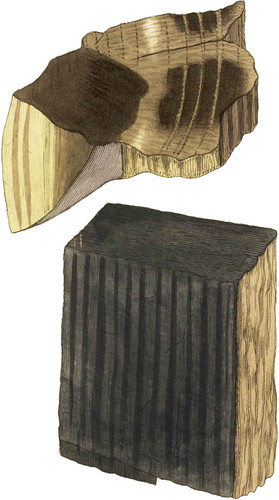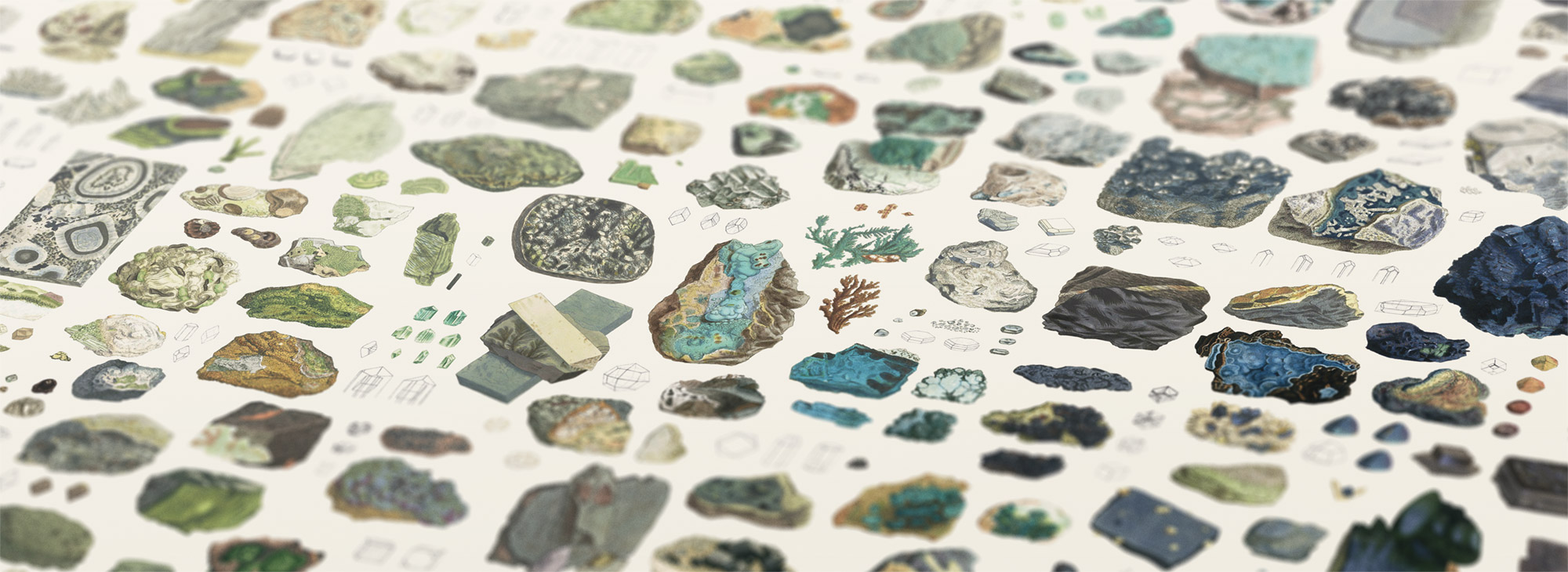 Enlarge
Enlarge
British Mineralogy
Wood-like Quartz, or Petrified Wood
- Class 2. Earths.
- Order 1. Homogeneous.
- Gen. 4. Silex.
- Spec. 1. Quartzum.
- Div. 2. Imitative.
The former specimen is externally very much allied to a Sandstone, although somewhat more condensed in the middle or centre; which often happens. The upper specimen in this plate is part of a piece found in Fleet-street in repairing the sewer there, and was given me by Thomas Furley Forster, Esq., F.L.S. It was very loose in the outer texture, and is quite solid within, losing the appearance of Wood, having the hardness and fracture of Flint, with a colour like that of Wood. It is stained black in some parts, having the appearance of burnt Wood. In this specimen we can scarcely determine whether it had been scorched or blackened by artificial fire, (as is sometimes done with Wood to give durability, and to prevent its rotting,) or by a natural process, more gentle. The piece figured below came from Derbyshire by favour of Mr. Martin, and is nearly black all over, excepting the outside, where it seems the bark may have covered it. This blackness gives it the appearance of having been charred by fire; but fire in the usual way must have affected the outside by stains or smoke, &c.: this therefore is an extraordinary appearance, and difficult to be accounted for with certainty. It is however to be seen, in some specimens which I possess, that the charring process may be effected by the natural progress or decomposition, which is continually seen to take place as far as our limits extend, and all over the surface of the globe. The Silex in this specimen, by attempting to crystallize, has rendered it somewhat granular, and has in some measure destroyed the finer and more delicate parts of the Wood.
I do not at present hazard a conjecture about what kinds of Woods these are. I have had many opinions from good judges about them; but must wait for further experience and more varieties. The remains of petrified woods, impressions of plants, &c. in different states are very universal. In coal-countries, and sometimes in other places, the Carbon and Bitumen often pass into Coal, or new combinations under the influence of their particular situations.

